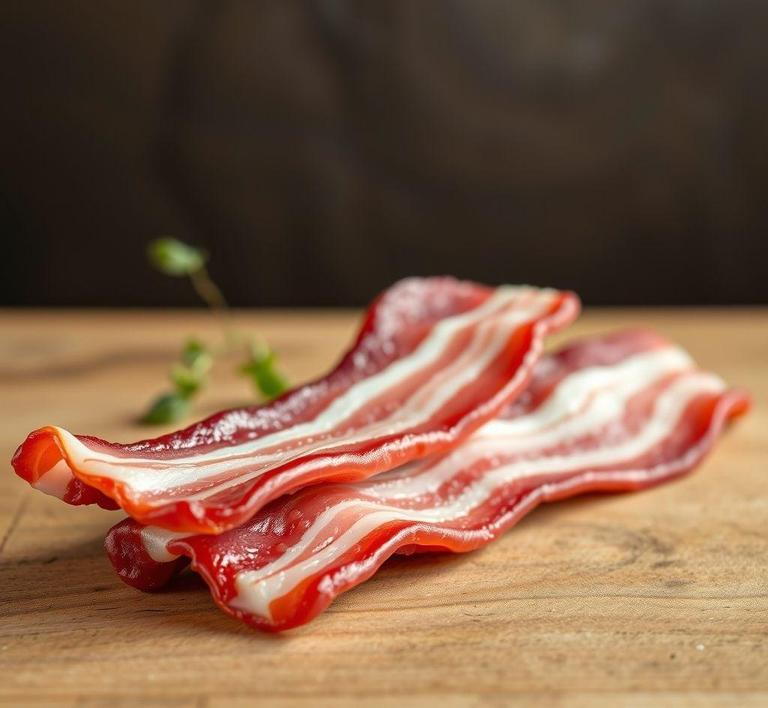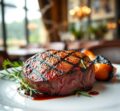If you’ve ever found yourself with leftover uncooked bacon and wondered whether it’s safe to refreeze, you’re not alone! Refreezing uncooked bacon might seem like a bit of a gray area, but it can actually be done safely with a few key precautions. In this guide, we’ll walk you through the best practices for storing and refreezing uncooked bacon, so you can make the most of your bacon stash without compromising its taste or texture. Whether you’ve bought in bulk or just overestimated how much you could eat, we’ve got you covered!
Can You Refreeze Uncooked Bacon?

When it comes to food safety and quality, one question that often comes up in kitchens is whether it’s safe to refreeze uncooked bacon. The short answer is: yes, you can technically refreeze uncooked bacon, but there are a few important factors to consider. Freezing uncooked bacon is a common practice for those looking to extend its shelf life and avoid wasting leftovers, but the act of refreezing it can pose risks, especially if not done correctly.
The primary concern with refreezing uncooked bacon is the potential for bacterial growth. If bacon has already been thawed, it enters a "danger zone" where bacteria can multiply quickly, especially if it’s been left at room temperature for too long. However, if the bacon was thawed safely in the refrigerator and hasn’t been sitting out for an extended period, refreezing is technically safe, though it’s not without its pitfalls.
How To Refreeze Uncooked Bacon?
Refreezing uncooked bacon is relatively simple, but there are a few key steps you need to follow to maintain both safety and quality.
-
Thawing Safely
- If your bacon is frozen and you plan to thaw it, always do so in the refrigerator, not on the counter. Thawing at room temperature increases the risk of bacterial growth.
- If you’ve thawed the bacon in the fridge and it has remained at a safe temperature (below 40°F or 4°C), it’s safe to refreeze it. Avoid thawing bacon using methods like microwaving or leaving it out at room temperature, as this can cause uneven thawing and increase bacterial risks.
-
Packaging
- Proper packaging is crucial to maintain the bacon’s quality during refreezing. Use an airtight container or resealable freezer bag to prevent freezer burn. If you’re using a freezer bag, try to remove as much air as possible. Wrapping the bacon tightly in plastic wrap and then placing it inside the bag can also provide extra protection.
- For added organization and ease, consider dividing the bacon into smaller portions before freezing. This way, you only need to defrost what you will use, preventing the need to thaw and refreeze again.
-
Labeling
- It’s easy to forget when you froze the bacon, so be sure to label the packaging with the date it was originally frozen. This will help you keep track of how long it has been in the freezer and ensure it doesn’t sit around for too long.
-
Freezing Quickly
- Once you’ve properly packed the bacon, place it back in the freezer as quickly as possible. Ideally, your freezer should be at 0°F (-18°C) or lower. The faster the bacon freezes, the better the texture and quality will be when you defrost it again.
Quality Impact
While it’s safe to refreeze uncooked bacon if done correctly, you should be aware that the quality can be affected. Bacon, like many meats, has a high fat content, and fat doesn’t always freeze as well as muscle tissue. When bacon is frozen and then thawed, the water within the fat can form ice crystals, which can cause it to lose some of its moisture once refrozen. This results in bacon that, while still safe to eat, may have a slightly altered texture and flavor after being refrozen.
-
Texture
- The texture of bacon can become softer and potentially more watery after refreezing. Bacon is famous for its crispy texture when cooked, but after thawing and refreezing, it may not crisp up quite as nicely, especially if it’s been exposed to air or if it’s been frozen for a long time. If you’re using the bacon for dishes where its crispy texture is important (like a BLT), you might notice a difference in the result.
-
Flavor
- Refrozen bacon may lose some of its fresh flavor. While bacon’s distinct salty and smoky flavors will still be present, the fat may take on a slightly rancid taste, especially if the bacon was stored in the freezer for too long or was improperly thawed before refreezing. Bacon that has been thawed and refrozen can also develop a stronger ‘freezer burn’ taste if not properly wrapped.
-
Moisture Loss
- As mentioned, the fat in bacon can lose moisture after being frozen and thawed. This can result in a slightly drier piece of bacon when cooked, even though the fat content is still high. This is particularly noticeable if you’re cooking the bacon in a way where moisture retention is key, such as in a pan-fry or oven-bake.
-
Freezer Burn
- One of the biggest quality concerns when freezing bacon (or any food, really) is freezer burn. If the bacon isn’t wrapped tightly or stored in an airtight container, it can develop freezer burn, which causes dry, tough patches on the surface. This makes the bacon less appetizing and could diminish the flavor, although it’s still safe to eat.
While you can refreeze uncooked bacon, it’s not always the best idea if you’re concerned with preserving its texture and flavor. Refreezing bacon can lead to some loss in quality, particularly in terms of texture and moisture, which could affect how well it crisps up when cooked. However, if you follow the proper freezing and thawing methods-keeping the bacon refrigerated, using airtight packaging, and avoiding long exposure to fluctuating temperatures-it remains safe to do so.
For best results, try to avoid multiple freezing and thawing cycles. If you know you won’t use all of the bacon in one go, consider dividing it into smaller portions before freezing. By doing so, you only thaw what you need, reducing the need to refreeze it and ensuring that your bacon retains its full flavor and quality. If you do choose to refreeze, always make sure it’s done safely to avoid health risks, and be prepared for some subtle changes in quality.
Is It Safe To Refreeze Uncooked Bacon?
Refreezing uncooked bacon is a topic that sparks a bit of debate among food safety enthusiasts and home cooks alike. While it may seem tempting to refreeze bacon after thawing it, the safety of doing so largely depends on how it has been handled during the thawing process. When raw bacon is properly stored and thawed, it’s generally safe to refreeze it, but there are crucial considerations to ensure you do so without compromising both safety and quality.
1. Initial Thawing Method
If the bacon was thawed in the fridge, rather than at room temperature, refreezing is much safer. This is because the fridge maintains a consistent and safe temperature, keeping the bacon within the recommended 40°F (4°C) range, preventing the growth of harmful bacteria. If you thawed the bacon in a microwave or using warm water, this raises the risk of bacterial growth, as parts of the bacon could reach temperatures above the safety zone. In such cases, refreezing is not recommended.
2. Duration And Temperature Considerations
When you thaw bacon, its quality can degrade over time. Bacon that has been in the fridge for longer than 1-2 days after thawing may have started to spoil, and refreezing it at that point would not only compromise its flavor and texture but also pose a health risk. It’s crucial to note that every time you freeze and thaw bacon, the moisture content changes, which can lead to changes in texture upon cooking.
3. Handling Of Raw Bacon
Raw bacon, like any perishable food, should not be left out at room temperature for more than two hours. If you’re thawing bacon at room temperature, the bacteria levels can increase rapidly, making it unsafe to refreeze.
Signs That Uncooked Bacon Should Not Be Refrozen
Before you attempt to refreeze uncooked bacon, it’s important to check for signs that it may not be safe to do so. These signs indicate that the bacon has likely spoiled and should be discarded:
1. Off Smell
Bacon has a distinct salty, smoky aroma, but if it begins to smell sour, rancid, or overly pungent, that’s a sign that the fats in the bacon have started to spoil. An off smell is a clear indicator that the bacon should not be refrozen, or even consumed.
2. Slimy Texture
Bacon is typically somewhat greasy due to the fat content, but if it develops a slick or slimy texture that feels sticky when touched, it is a strong sign of bacterial growth. At this point, the bacon has begun to spoil and should be thrown out.
3. Discoloration
Fresh bacon is usually pinkish-red in color. If the bacon turns gray, brown, or greenish in hue, this is a red flag indicating the presence of harmful bacteria. While slight discoloration may occur due to oxidation, a drastic change in color means the bacon should not be refrozen.
4. Unusual Firmness
Bacon that is too soft, mushy, or sticky to the touch could be a sign that it has been thawed and refrozen multiple times or has been left out for too long. The texture should remain firm, with a slight crispness when handled, even before cooking.
Common Refreezing Mistakes
When it comes to refreezing uncooked bacon, there are several common mistakes that people often make. These errors can impact both the safety and the quality of the bacon:
1. Refreezing After Extended Storage
A major mistake people make is refreezing bacon after it’s been stored in the refrigerator for too long, even if it was never thawed out in the first place. Bacon that’s been kept in the fridge for more than a week, even if previously frozen, can spoil and should not be refrozen.
2. Refreezing Without Proper Packaging
Bacon is highly susceptible to freezer burn due to its high-fat content. If bacon is not properly sealed in an airtight container or tightly wrapped in freezer-safe plastic or foil, it can develop freezer burn, which dehydrates the meat and affects its taste. This can also happen if the bacon is exposed to air or moisture before refreezing.
3. Refreezing Bacon That Has Already Been Cooked
Refreezing cooked bacon is often more acceptable than uncooked bacon, but many people fail to consider how long the bacon has been sitting out or how well it was stored. Bacon that has already been cooked and then refrozen can lose its crispness and texture, making it far less enjoyable after being thawed and reheated.
4. Not Thawing Properly Before Refreezing
Thawing bacon in the microwave and then refreezing it can alter the texture and introduce uneven temperature zones that encourage bacterial growth. Similarly, defrosting bacon at room temperature is dangerous because it can spend too long in the "danger zone" (between 40°F to 140°F), which is conducive to bacterial growth.
Tips And Tricks
To maximize both safety and quality when refreezing uncooked bacon, here are some helpful tips:
1. Thaw In The Fridge
Always thaw bacon in the refrigerator, not on the countertop or in the microwave. This will maintain its safety by ensuring that the bacon stays at a safe temperature throughout the thawing process. If you’re planning to use bacon after thawing, use it within a couple of days to prevent spoilage.
2. Portion Control
If you’re unsure about how much bacon you’ll need, it’s a great idea to divide the bacon into smaller portions before freezing. This way, you can thaw only the amount you need, minimizing the risk of repeated freezing and thawing.
3. Use Freezer-Specific Packaging
Wrap uncooked bacon tightly in plastic wrap or aluminum foil, and then place it in a freezer-safe zip-top bag to ensure that no air gets inside. You can also use a vacuum sealer to prevent freezer burn. Be sure to remove as much air as possible to maintain freshness.
4. Label And Date Your Bacon
Keeping track of the date when you freeze your bacon is essential for food safety. It’s easy to forget when it was frozen, and labeling packages will remind you of how long it’s been in the freezer, so you can use it before it loses quality.
5. Refreeze With Care
If you decide to refreeze uncooked bacon, try to do it only once. Each freezing and thawing process diminishes the quality and texture of the bacon. If you’ve thawed the bacon in the fridge, you can safely refreeze it once, but do so with the understanding that it might not taste as good as the first time it was frozen.
Conclusion
In conclusion, it is generally safe to refreeze uncooked bacon, but only if it has been handled correctly throughout the thawing process. Thawing in the refrigerator, using airtight packaging, and taking care not to exceed recommended storage times are all critical steps to ensure that the bacon remains safe to eat after being refrozen. Always trust your senses-if the bacon has an off smell, odd texture, or discoloration, it’s better to err on the side of caution and discard it. By avoiding common mistakes and following the proper steps, you can successfully refreeze uncooked bacon while preserving both its safety and flavor.

